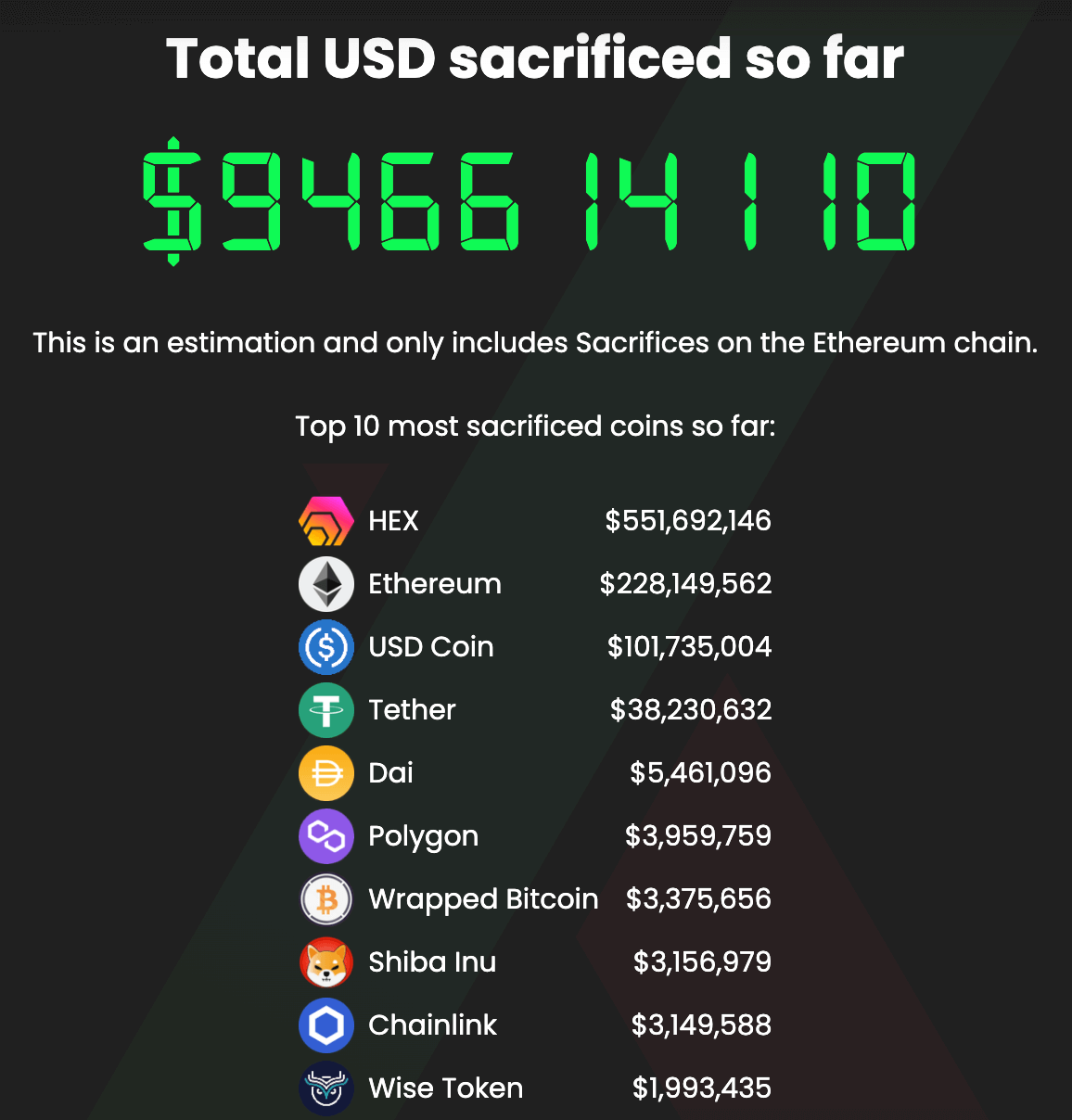
On Jan 10th, the first stage of PulseX’s “sacrifice” ended, bringing total investment into the project to $1 billion and making it one of the largest funding rounds (albeit unofficial) in crypto history.
This comes just 4 months after the half-billion-dollar sacrifice to Pulsechain, a future Ethereum fork on which PulseX is expected to be the main DEX.

A disclaimer on PulseX’s website reads, “By sacrificing your crypto you do NOT buy PLSX. You can give your crypto away, sacrifice it as a political statement.”
Depending on whether you ask detractors or supporters, this clause is either a loophole to avoid being labeled a security by the SEC, or evidence that it’s the next Bitconnect.
Assuming most of the funds sacrificed were de facto investments made with the expectation of profit, nor came from wallets associated with the team to inflate the project, how did a chain led by Richard Heart, founder of controversial cryptocurrency Hex, become one of the largest crowdfunding campaigns in crypto history?
And, why is discussion almost entirely limited to the Hex community?
This article will explain what some believe Pulsechain and PulseX will do. It will also list the reasons some believe the project is a scam.
What Problem Does Pulsechain Solve?
Hundreds of successful DApps have launched on Ethereum but the network’s popularity has made it expensive to use and slow. In 2021, gas fees—the price to validate…







